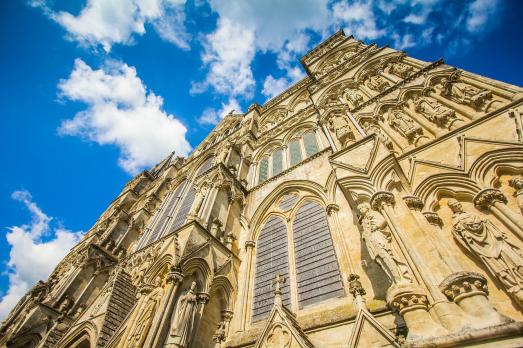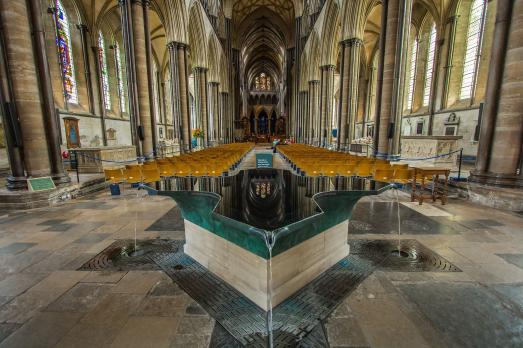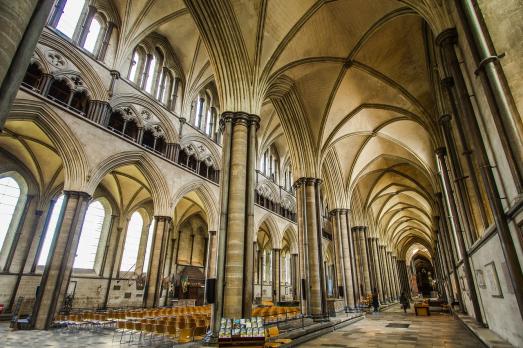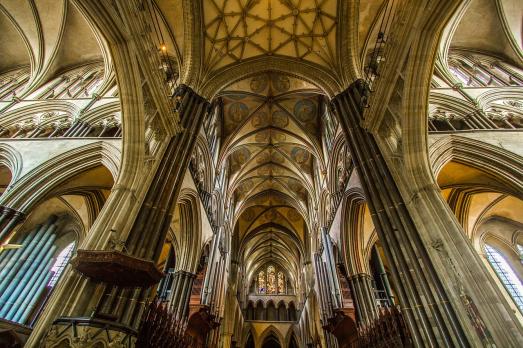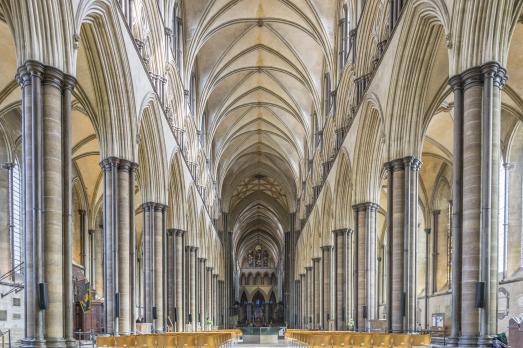The foundation stones were laid on 28th April 1220.
The first part to be completed was the three eastern chapels named for St Stephen, Trinity and St Peter. The building of the new cathedral was greatly helped by the energy of the bishop and the patronage of powerful people, including King Henry III, who donated trees from Ireland and estates in Wiltshire and Alice Brewer, who gave marble for 12 years from her Purbeck quarry, which provided capitals, shafts, columns and bases inside, and some shafts outside. The Bishop, Dean and 52 Canons also each made substantial donations from income derived from their estates, or prebends.
The main body of the cathedral was finished by the consecration on 29 September 1258. But the whole project also included the west front, the cloisters, the Chapter House, and the (now demolished) detached bell tower, which stood between the High Street gate and the Cathedral. All of these were probably completed by 1266.
There is so much to see on a visit to the Cathedral, from beautifully carved monuments and tombs to our famous Father Willis Organ, regular art exhibitions and the world's oldest working mechanical clock. It is home to the best preserved of only four surviving Magna Carta (AD1215) which is listed on the UNESCO 'Memory of the World' register. Marvel at Britain's tallest spire which weighs 6,500 tons, and take a stroll around the 80 acre Cathedral Close, the largest in Britain.


